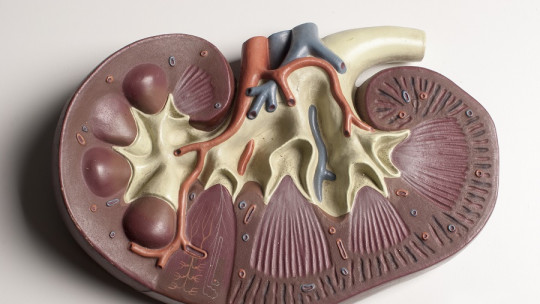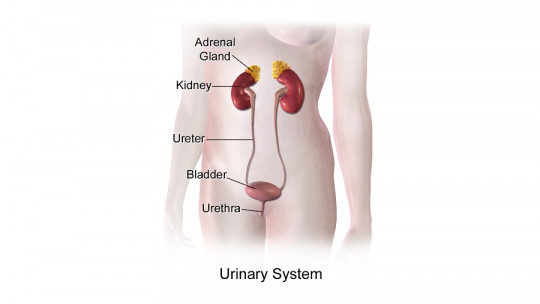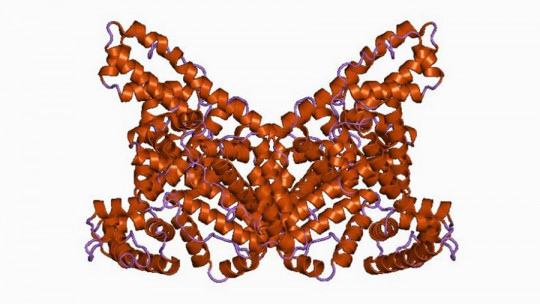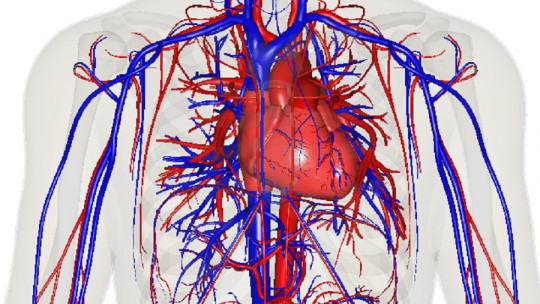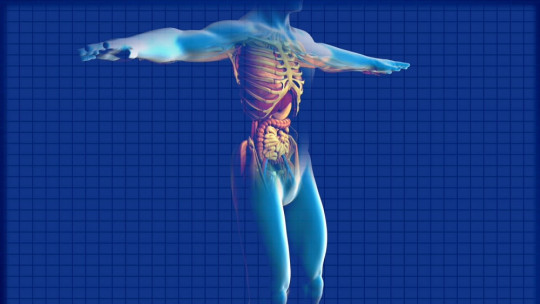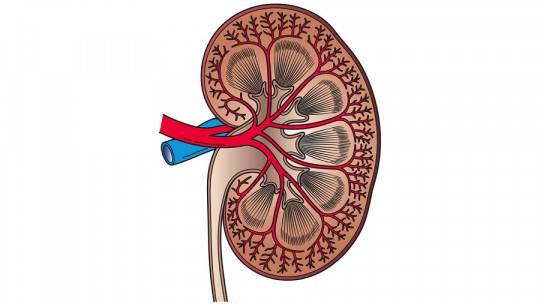
The urinary system is responsible for the formation, conduction and storage of urine, a yellowish liquid known to all that is obtained as a result of the purification and filtering of the individual’s blood.
This mechanism It is essential for maintaining balance in organic fluids, as well as for the elimination of toxic substances and even the maintenance of blood pressure. Therefore, it is no surprise to anyone to know that human beings excrete an average of a liter and a half of urine per day, depending on the food and liquids ingested.
We cannot talk about the urinary system without placing our eyes and mind on the kidneys, since they are one of the only two components that make up this system, along with the urinary tract. Although every human has a general overview of this pair of interesting organs, the kidneys keep many more secrets than it might at first seem. Therefore, today we talk to you about the parts of the kidney and their functions
Parts of the kidney and their functions: beyond the formation of urine
If we think about the urinary system, the first thing that comes to mind is urine production (logical, since this word is included in the first term). Even so, The kidneys do not limit their functionality to blood purification Therefore, in the first instance, we show you all the activities that the kidneys carry out for the physiological and metabolic balance of human beings:
As we can see, we are dealing with multidisciplinary bodies, since they are not only responsible for the elimination of substances, but also They are also responsible for the synthesis of sugars such as glucose and hormones such as renin, erythropoietin or kallikrein all with different functions on the body.
It’s incredible to think that a couple of organs that make up no more than 1% of a person’s body weight can be so key to their survival, right? All of this is put more into perspective when we discover that, for example, Kidney irrigation accounts for approximately 22% of cardiac output The volume of blood passing through these structures at any given time is, therefore, a value that is not insignificant.
Once we have established the functionality of these incredible structures, let’s dive into their characteristic morphology.

1. External protective fabrics
We are going to start from the outside and dissect the kidney mass little by little. First of all, it is necessary to note that each of these two organs is surrounded by three different layers of tissue:
It is especially important to remind readers that this system, As it is not in direct contact with the environment, it does not have a microbiome or associated bacterial agents beneficial to its functions For this we have these protective fabrics, so that pathogens do not sneak in and generate the dreaded urine infections.
2. Renal cortex
This layer corresponds to the outermost part of the kidney. It is one centimeter thick and has a brownish red color. This area contains 75% of the glomeruli, which are a network of small blood capillaries by which the purification and filtration of blood plasma occurs, as the first part of the urine-forming process.
Therefore, the renal cortex receives 90% of the blood flow that enters these organs and has a filtration, reabsorption and secretion function. It should be noted that this outermost layer is not separated longitudinally from the renal medulla, since a series of protrusions called renal columns occur towards them.
3. Kidney medulla
The renal medulla, for its part, It is located at a deeper point in the kidney and presents greater morphological complexity, as it is composed of conical-looking units (with the base directed towards the cortex) called renal pyramids. These are divided among them by renal columns and their number varies between 12 and 18. Therefore, we can say that the human kidney is a multilobed organ.
The apex of each renal pyramid flows into a minor calyx, and the union of several of them gives rise to the major calyces, which join to generate the renal pelvis We have to imagine this structure as if it were a tree: the renal pelvis is the trunk, and the calyxes are each of the branches that lead to large leaves (the renal pyramids).
Finally, it is necessary to note that The renal pelvis corresponds to the section of the ureter Therefore, the urine will travel through here to the bladder, where it will accumulate until it is emptied by the process of urination known to all.
4. The nephron
It seemed that this moment was not going to come, but we cannot leave the nephron in the dark: the basic structural and functional unit of the kidney, where blood is filtered and purified To put things in perspective, there are an average of 1.2 billion nephrons in each kidney, which filter a whopping 1.1 liters of blood per minute.
As much as it is extremely complicated to make a mental image of this very complex structure, we are going to describe its parts briefly:
As confusing as this whole terminological conglomerate may seem, the idea that must be clear is that the nephron is a highly specialized functional unit in order to carry out blood filtration. This is collected in four simple steps: filtration, tubular secretion, tubular reabsorption (recycling of nutrients and substances such as glucose, amino acids, 60-70% potassium and 80% bicarbonate) and excretion that is, the emptying of the nephron.
It should be noted that, after the age of 40, an average of 10% of nephrons are lost every 10 years. This happens since the kidneys are not capable of regenerating them. Even so, the remaining nephrons have been seen to adapt to maintain adequate kidney function within the limits of normal.
Conclusion
As we have seen, not only are the parts of the kidney and their functions highly complex, but each of these organs is made up of millions of small individual filtering machines: the nephrons.
We must see the process of filtering and generating urine as a tree-shaped machinery: from the small capillaries called glomeruli, where blood filtration occurs at the most microscopic level possible to the renal pelvis (place of collection of the kidneys to the bladder), the urine undergoes a series of changes and reabsorptions that lead to the yellowish liquid to expel.
- Rodrigues, CFS, Olave, E., Gabrielli, C., & Sousa, LMC (1997). Anatomical considerations regarding renal fusion: case report. Chilean Journal of Anatomy, 15(1), 51-55.
- Cachofeiro, V., Lahera, V., & Tresguerres, JA (1999). Anatomofunctional aspects of the kidney. HUMAN, 374.
- Anatomy of the urinary system, stanfordchildrens.org. Collected on September 9 at https://www.stanfordchildrens.org/es/topic/default?id=anatomyoftheurinarysystem-85-P04568
- Urinary system, Laboratory of Physical Anthropology and Human Anatomy. Collected on September 9 at http://www.anatomiahumana.ucv.cl/morfo2/ren.html

